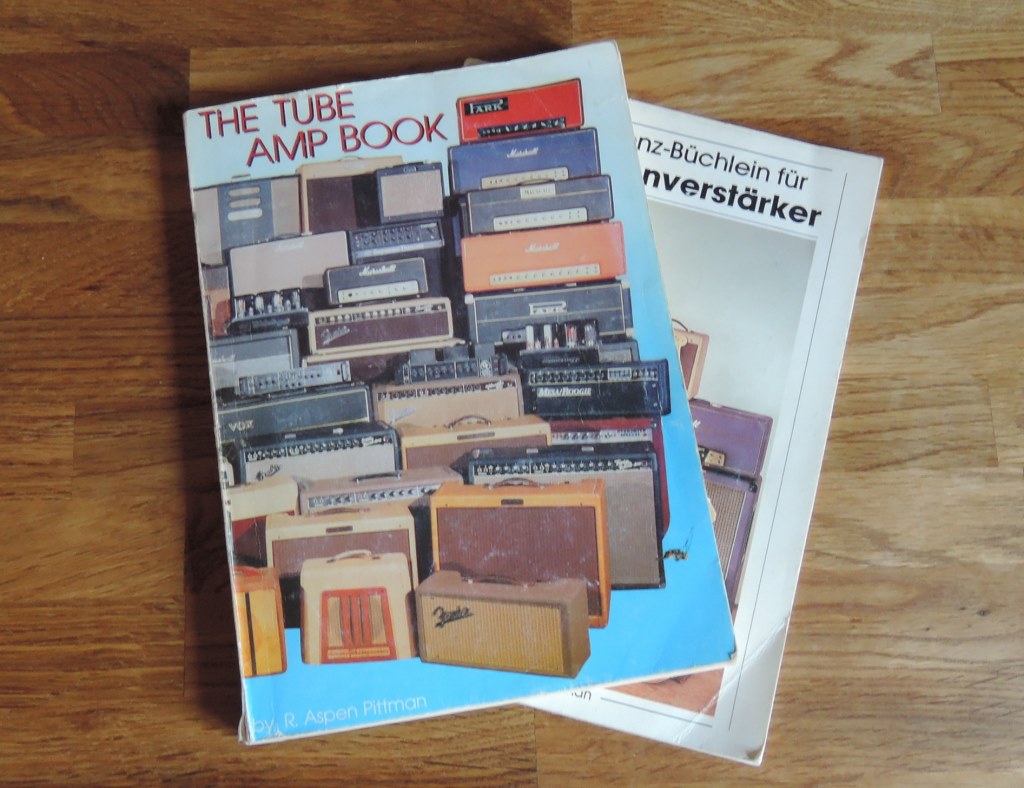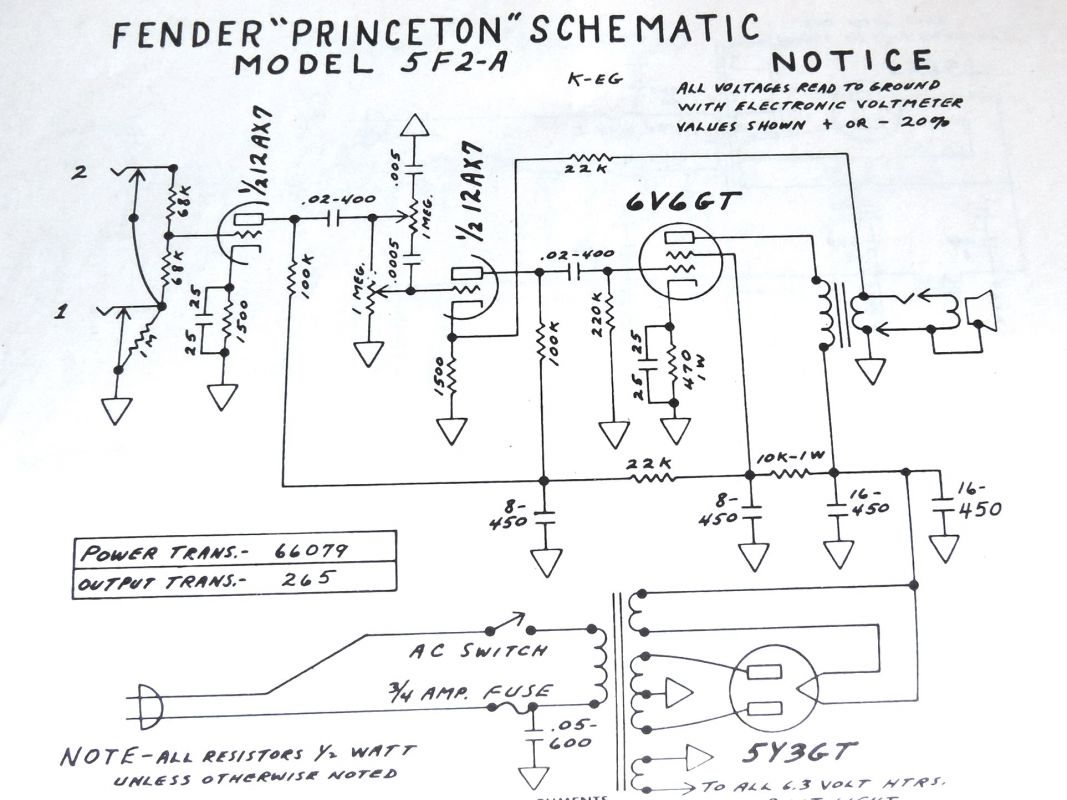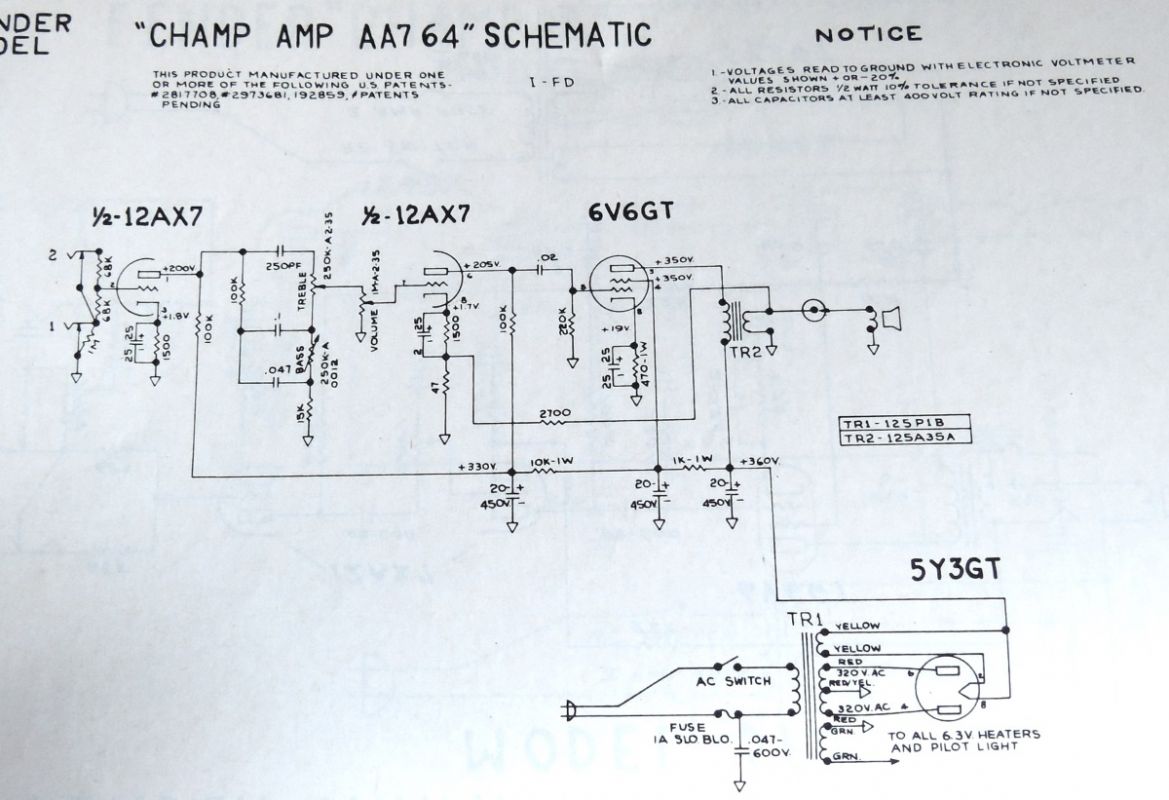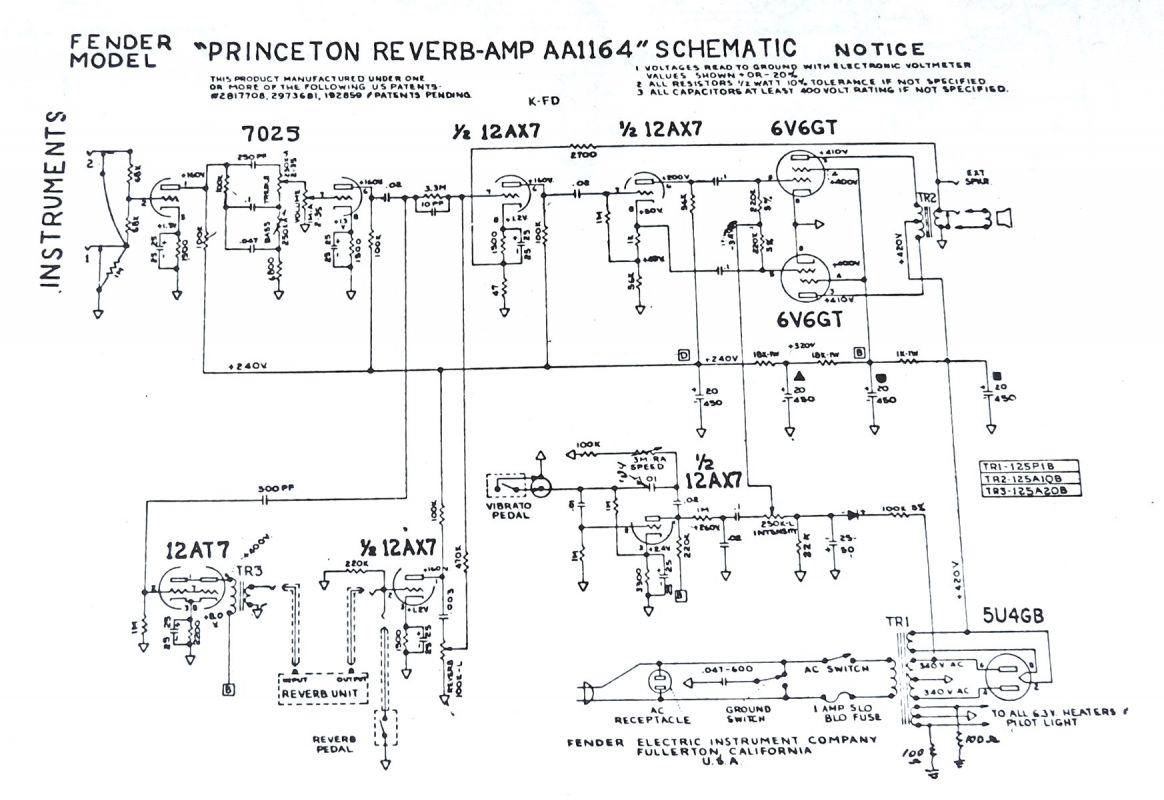Basic circuits as models
The first step is to clarify some concepts that play a role in the classification of amplifiers.
SE
SE is the abbreviation for "Single Ended", so you only have one power amp tube. This type is used up to about 20W and has the advantage to work with only a few components. The disadvantage is that power leads to weight gain due to the heavy transformers. For small amplifiers, this technology is the first choice. There are also SE circuits with multiple power tubes, these are just connected in parallel.
PP
PP is the abbreviation for "Push / Pull" and has at least two output tubes. The higher circuit complexity is rewarded with more power at less weight. The circuit is easier to get hum-free - for high-output amplifiers the first choice.
PI
PI stands for "Phase Inverter". This may consist of one or two triodes and prepares the signal for the PP power amp. There are amplifiers without PI, which are called "self split". The first phase inverter was the "Paraphase PI". For harp, the "Cathodyne PI" is well suited because it uses only one triode, which brings no additional gain. Modern amplifiers usually have a "LTP PI" (LongTailedPair), which offers the best performance.
Tone
Simple tone controls have a controller for "Tone". This can be done in different ways. Well known in Germany is the "Tweedblende" that Fender successfully used since the 50s. For Harp, a high pass filter is usually sufficient. The sound has more mids and sometimes leads to feedback. But for smaller amps that is very solid.
ToneStack
A tone stack is usually a tone control with Bass-Mid-Treble. For harp, the Fender stack has proven, because it causes a lack of mids and lowers them to 400Hz. This controls the annoying feedback. By modifying, you can achieve even better results.
Gain
Gain is the amplification in the pre amp. It is more about amplitude, not power. A microphone has a higher output voltage than a guitar pickup, therefore you have to reduce the gain for harp. But even a tone stack "eats" gain. The circuit has to be designed in a different way then.
6V6 / 6L6
We use american standard tubes. Basically, you can build each of the circuits with the 6V6 type (less power) or 6L6 type (more power). Of course, other changes might come up then.
And again I come back to Fender. His circuits are extensively documented. The amount of different models makes it difficult to determine exactly one circuit, because they sometimes differ only by two components. Also, an almost identical circuit runs under different names. But this is only a problem, if you want to be "historically accurate". The circuits can all be found on the net, I got a holy book given by Sepp, in which they are all listed. This is also the source of my images.
I tried to collect the essential for harp amp tinkerers and decided on the following circuits:
Tweed Princeton 5F2a
The best known and easiest small amplifier is the "Champ". The Princeton has the same structure, only an additional tone control. Therefore, this circuit is the first choice for a simple SE harp amp. My interpretation of the circuit is the Poor Bluesman. This category also includes the Harp Gear HG II, the Monsterharp, the Memphis Mini, the Weber 5f2h, the 6L6SE of the Lone Wolf Blues Co. and many more. The power is about 5W with a 6V6 and 10-15W with a 6L6.
The Blackface /Silverface Champ
Another SE amplifier which on the contrary to the above group has a tone stack. This is a better solution for harp, because you are tonally flexible. Impractically the mid control at Fender usually did not lead to an output, which would be particularly interesting for harp. Even with the current equipment, a tone stack is often present, but the values are fixed, there is no control. A tone control "eats" gain, so you do not have to slow down the tube too much.
In this category, you can find my Bluesman SE and also the Marble Max. The Max is a fairly accurate copy of the Champ and a little adapted to harp. The tone control is the treble control of the tone stack.
Princeton Reverb
In the class of PP amplifiers a tone stack is most commonly used. If you like the sound of a "tone-controlled" amplifier, a Fender Harvard 5F10 would be a nice template. But most will appreciate the circuit of a Princeton Reverb omitting the reverb and tremolo. A pre amp as in the Silverface Champ and a power amp with cathodyne phase inverter. This has less gain than the later used LTP phase inverter, which may be advantageous ..
The Bassman
No doubt, the '59 Bassman 5F6a and his descendants are very popular harp amps. After a little tube replacement it is already working quite well. But as a hobbyist, I would turn my attention to another circuit in this class - the "Pro Amp" 5E5-A. A 6L6 amp with cathodyne PI and negative feedback amplifier before the tone stack. Do not care of the tone stack, it gets replaced by the proven modified stack, then omit the first stage, some other things .... and you have the harp amp of your dreams. I call it Bluesman PP :-)!
If want as much power as you can get, use the LTP PI with a 12AU7, big trannys and a 4x10" or 1x12" + 2x10" cab.




